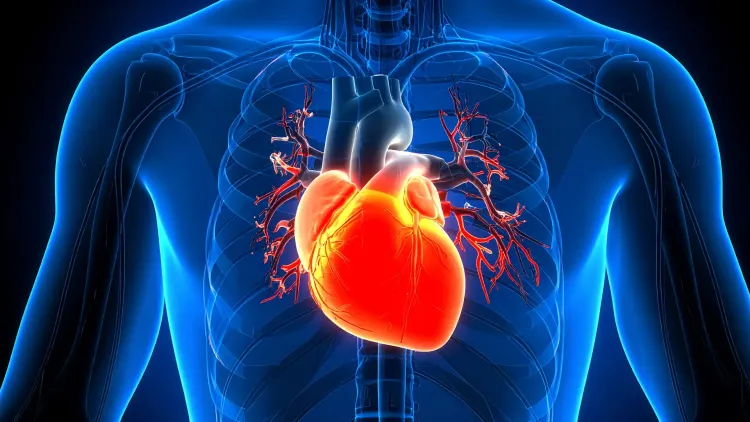Are Current Heart Attack Screening Tools Missing 45% of At-Risk Individuals?

Synopsis
Key Takeaways
- 45 percent of at-risk individuals go undetected.
- Relying only on risk scores may be inadequate for prevention.
- Symptoms often appear too late to change outcomes.
- A shift towards atherosclerosis imaging is recommended.
New Delhi, Nov 24 (NationPress) A recent study reveals that the existing cardiac screening tools may overlook 45 percent of individuals who are genuinely at risk of experiencing heart attacks. Conducted by researchers from Mount Sinai in the US, this study uncovers a significant gap in patient care, indicating that reliance solely on risk scores and symptoms could jeopardize the prevention of heart attacks.
The findings, detailed in a report published in JACC: Advances, highlight the necessity of addressing the buildup of silent plaque.
“Our research demonstrates that population-based risk tools frequently do not accurately represent the true risk for numerous individual patients,” stated Amir Ahmadi, Clinical Associate Professor of Medicine (Cardiology) at the Icahn School of Medicine at Mount Sinai.
“Had we evaluated these patients merely two days prior to their heart attack, nearly half would not have qualified for additional testing or preventative therapy based on existing risk estimate scores and guidelines,” Ahmadi noted.
To assess the effectiveness of the well-known atherosclerotic cardiovascular disease (ASCVD) risk score alongside a newer tool called PREVENT, which incorporates various factors for a more thorough cardiovascular risk estimate, the research team analyzed data from 474 patients under the age of 66 with no prior knowledge of coronary artery disease.
The results indicated that if patients who experienced their first heart attack had been assessed two days earlier, nearly half would have been categorized as low or borderline risk and would not have been recommended for preventative therapy by the ASCVD guidelines. More than half would have received a similar classification from the PREVENT tool.
Overall, 45 percent of patients would not have been suggested for preventative therapy or diagnostic assessments based on current ASCVD guidelines, a figure that escalated to 61 percent when applying the new PREVENT calculator.
Most patients (60 percent) did not exhibit symptoms, such as chest pain or shortness of breath, until less than two days before their cardiac event, indicating that symptoms often manifest too late to alter the progression of the disease.
The Professor emphasized that instead of depending on risk scores and symptoms as primary indicators for prevention, it may be advantageous to shift towards atherosclerosis imaging to detect silent plaque – early atherosclerosis – before it has the opportunity to rupture.








